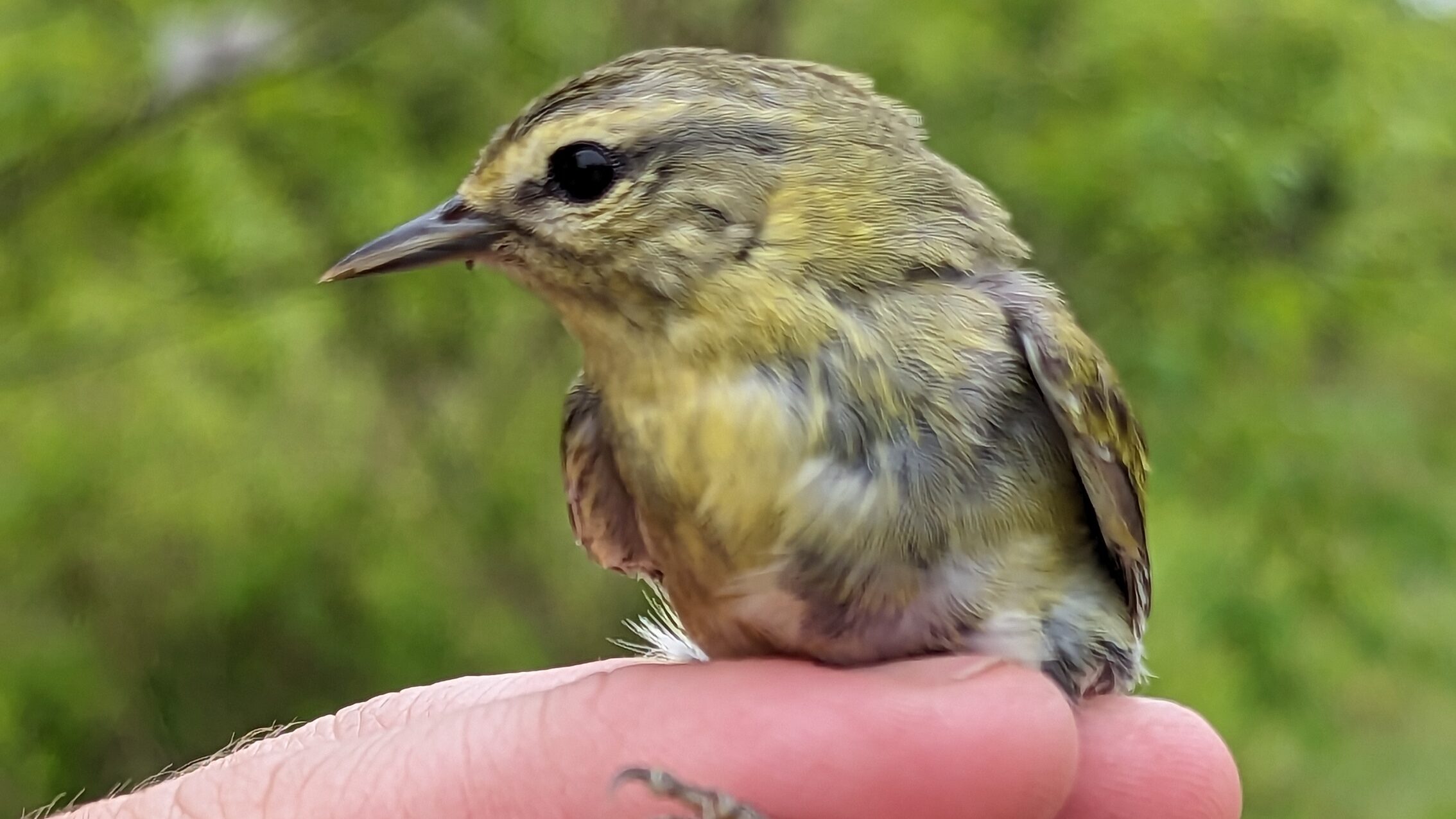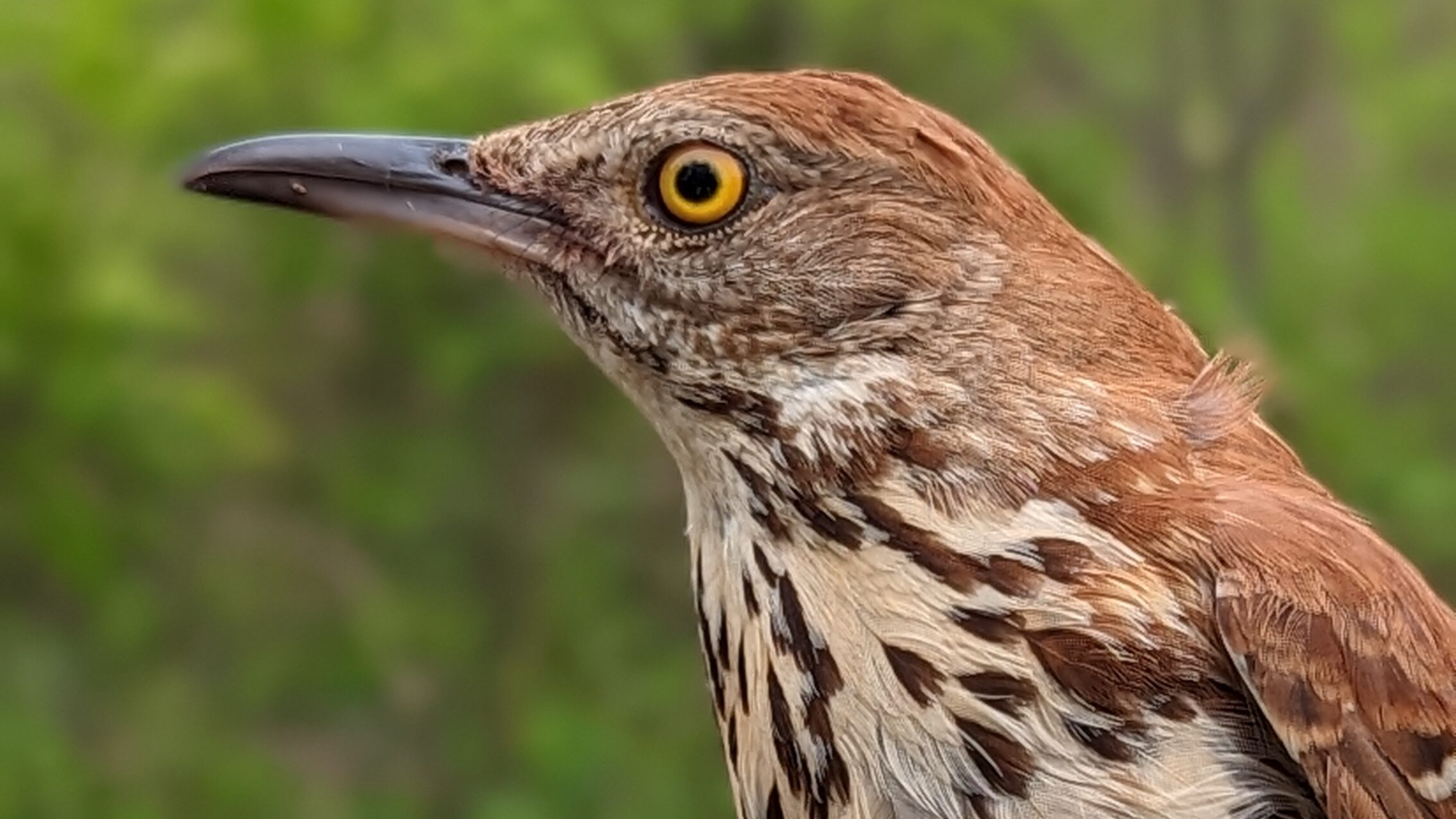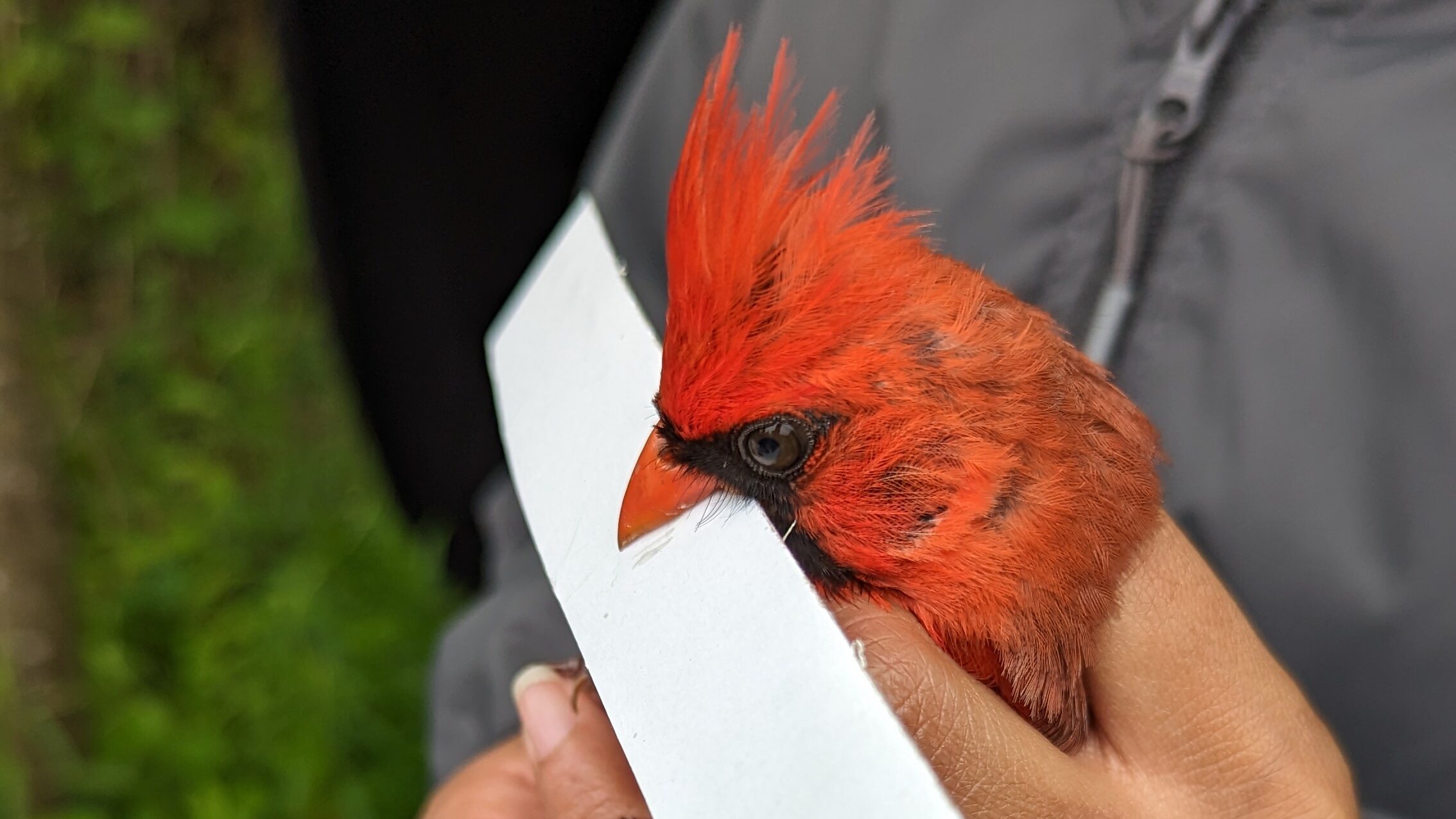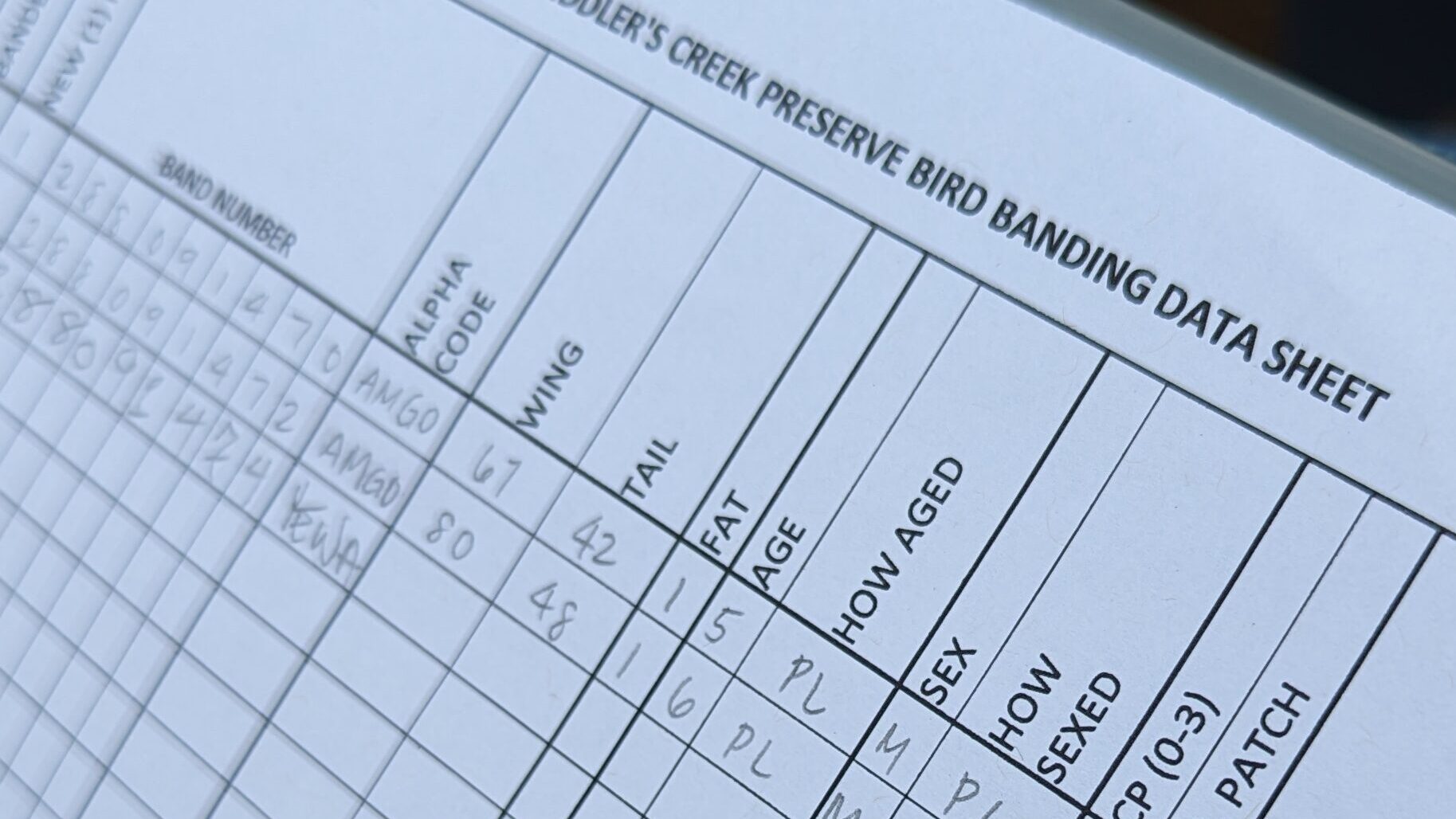Singin’ In the Rain
Vol 2. Saturday May 13, 2023
75° / 58° Overcast, humid
While the moon didn’t light my way this particular morning as it had done the week before, I did see a paper go flying out the window of a newspaper delivery car, which startled me in the half dim shadows on the road. In today’s digital world, the concept of a paper route had escaped me. And then a few rain sprinkles hit my windshield to bring me back to calm. The overcast skies and minuscule threat of rain were good omens for a successful morning ahead. Lower the clouds, the lower the birds.
It was a big day for birders. Probably one of the biggest of all worldwide. It was Global Big Day as well as World Migratory Bird Day. While it was a big day, our typical crew at Fiddler’s Creek was much smaller in headcount. Almost half the team was out on a mission to log as many species as they could in a set amount of time. While on a bike all around southern New Jersey. Yup! Birding by bike is indeed a thing. Our missing comrades were competing in the “Carbon Free” category of the World Series of Birding, hosted by the NJ Audubon Association and were looking to defend their title.
Our parking lot meet time was again 6am as it had been the week before, and our skinny screw made it out to our station hauling gear and impedimenta. The usual necessary equipment clattered about the table. Pliers, scales, sharpies, and an array of bands ranging from teeny tiny for Northern Parulas, to much more robust for rowdy Northern Cardinals and all the sizes in between. And the table is never without at least a half dozen water bottles and the most important tool of all…the bird bander’s key reference book. Pyle. Part text book, part tome, this book is always within arm’s reach. A highly technical guide for researchers, used for bird banding, which includes data for 395 species and 857 subspecies. The data includes plumage, molt patterns, measurements (wing, tail, bill, tarsus, mass), sexing, and aging information. I will add, it is entirely in black and white. Identification Guide to North American Birds, Part I: Columbidae to Ploceidae, by Peter Pyle, it’s quite the text.

Today was Grey Catbird day. All told, a bakers’ dozen of mewing and biting. But the day also brought in a few far more exciting birds as well. A Tennessee Warbler was an added bonus, as was the Swainson’s Thrush that was passing through this area. I was also ecstatic to see probably the most gorgeous bird I had ever seen in person. Rightly so, it looked like something that was more suited to living in a rain forest than in the hills and scrub land of the middle of New Jersey. Perfectly proportioned, not too slender and not too stout, its feathers the perfect shade of somewhere between lemon and bumblebee, mixed in just so with plain smoke gray. Add to that combination the perfect white chin, throat, and practically encircling the whole nape. This dressed-to-the-nines fellow then has “get lost in them” white, nearly pale blue eyes. This White-Eyed Vireo certainly made my heart flutter just a tad. Part of the mystique of this bird is that they are constant singers, yet mostly remain hidden. A bit of a “spaz” they are always there by sound, but nearly outta sight when they forage. A photographers’ thorn really. Annoyingly gorgeous.

In between the hourly chime we all plucked ticks off of one another like it was a game. Taking the term “I’ve got your back” to a whole new level, as we found them on feet, neck, knees and arms. They were on chair legs, cameras, jackets, it was a tick explosion. It got so bad to the point of being comical. Thankfully the blunder of tick season was interrupted multiple times with new birds. I can’t remember if it was the hour before, or the prior weekend, but I recall asking the question, “Do you ever get Northern Mockingbirds?” The answer being “Yes, but typically later on in the season with the young birds, because the adults are too smart.” Well, that changed.
Not only did a Northern Mockingbird find its way to the station, but also the trifecta of mimids on this day. Also in the mix we had a Brown Thrasher! Mix that in with the handful of Gray Catbirds, and it was all three!


I was then immersed in more molt patterns, wing length, and brood patches. But I was also bemused when I saw a Northern Cardinal chomping down on a piece of paper. A pacifier of sorts. They just love to bite. But this little fellow was happy to have a piece of 80lb paper to bite down on. Then, my attention was diverted once again. A tick, on me. Little brown dot of annoyingness. This can only get better from here!

The threat of rain held off and we were winding down, but the birds in the field were still singing away. I heard a Baltimore Oriole multiple times. Plus the constant chortles of the Tree Swallows are always overhead.

Research was logged on paper, but there is still much to do. All the recordings make their way into a large online database of band numbers corresponding to species. For now, we packed up our cases of equipment, double checked our bins full of banding equipment and checked for ticks one more time. I think there’s a Brad Paisley song about ticks? Not one to sing myself, I drove home in silence taking mental notes instead.
Here are the birds species of this day in no particular order:
Carolina x Black-capped Chickadee (hybrid)

The Wild Bird Research Group, Inc. is a 501 (c)(3) non-profit organization whose mission is to conduct and support research and science-based conservation initiatives that benefit birds and their habitats in the Americas. WBRG and its associates conduct various research, monitoring and education programs in the Mid-Atlantic U.S. and Central America, tropical bird banding internships for university students, owl migration and winter ecology research, and bird-focused environmental interpretive programs.
Birds are also good indicators of environmental health because they are sensitive to habitat change. Changes in bird populations can indicate environmental stressors, such as impacts from extreme weather or human development, which could affect other parts of the ecosystem. For all of these reasons and others, researchers conduct avian conservation science.
The USGS Bird Banding Laboratory, now based at the USGS Patuxent Wildlife Research Center in Laurel, Maryland, was established in 1920 to study and help protect North American birds. The USGS laboratory issues permits for banding in the U.S., distributes aluminum bands—about 1 million a year—to participating scientists in the U.S. and Canada, and is a central repository for banding records in both countries.*
*Excerpt from https://www.usgs.gov/news/featured-story/usgs-celebrates-100-years-bird-banding-lab
